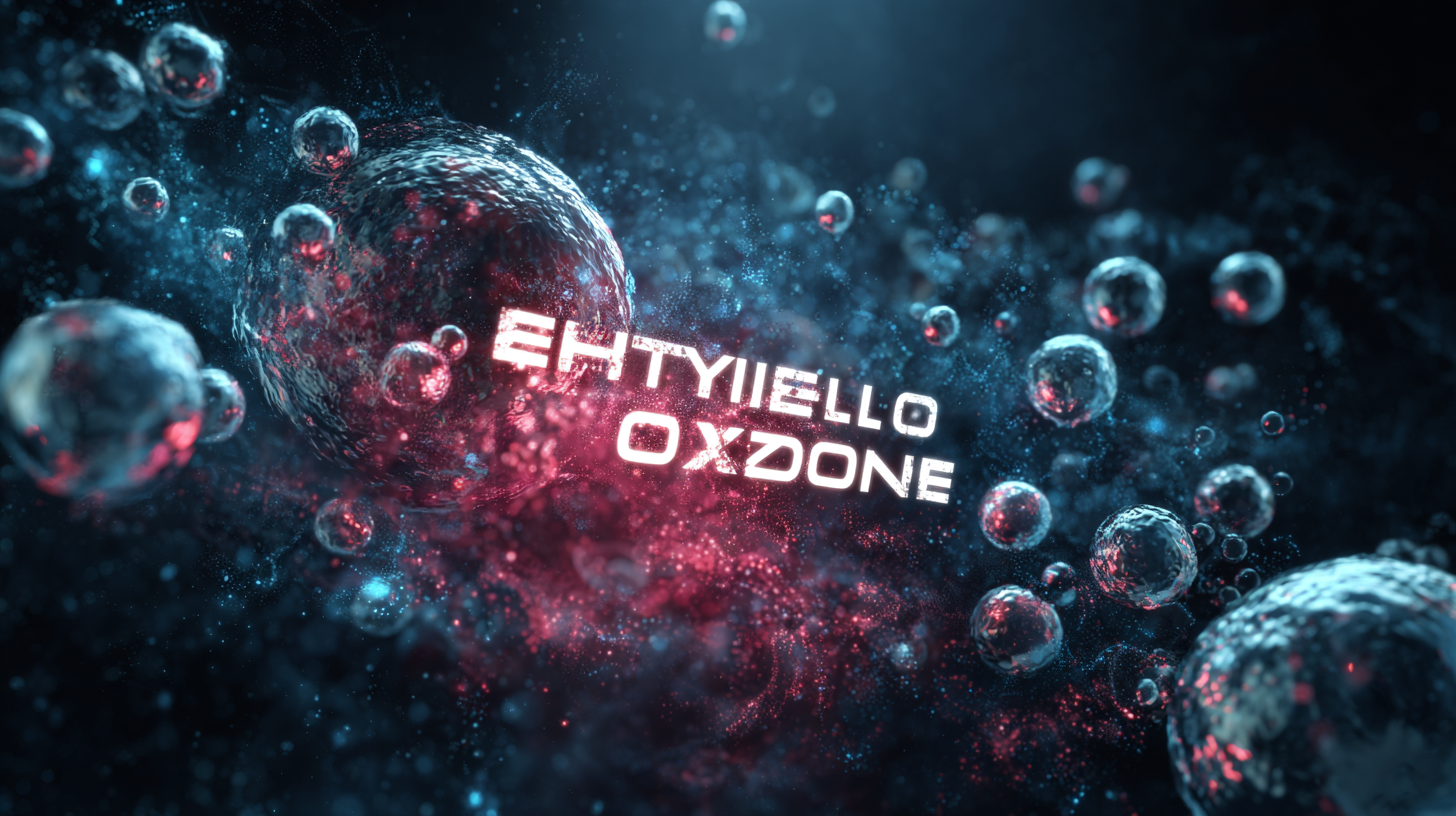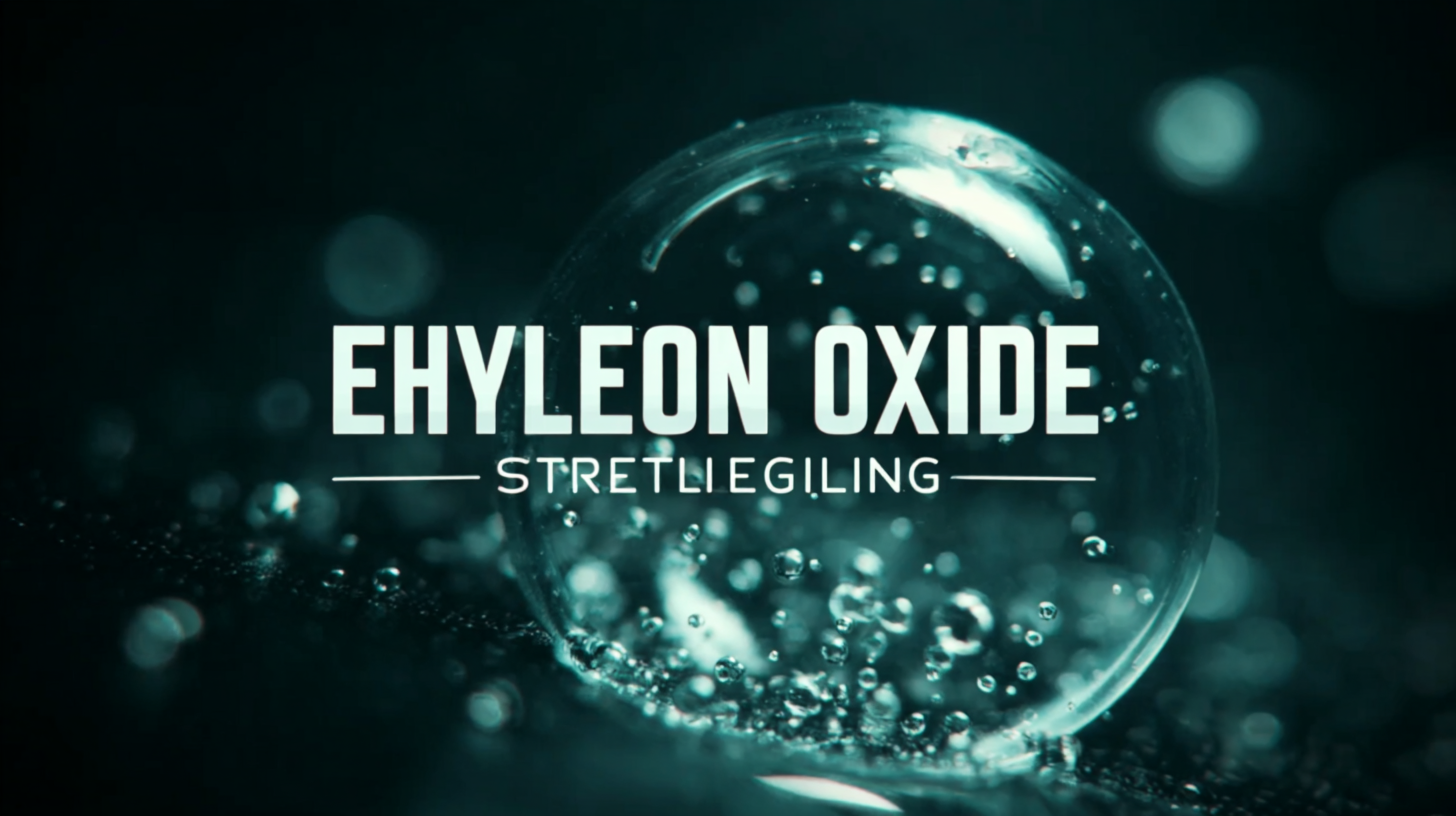- Home
- Products
- Services
- Product concept development
- Engineering
- Design for manufacturability
- Regulatory services
Read more - Material selection and formulation
- Prototyping
- Testing and validation
Read more - Production process development
- Custom tooling
- Manufacturing
- Finishing operations
- Assembly
- Packaging
- Private labeling
- Sterilization
Read more
- Resources
- Careers
- Search
Exploring Innovative Alternatives to Best Ethylene Oxide Sterilization Methods
Ethylene Oxide Sterilization has long been a cornerstone in the healthcare industry, particularly for its efficacy in sterilizing a wide range of medical devices and equipment. According to the Centers for Disease Control and Prevention (CDC), nearly 50% of all hospital sterilization processes utilize Ethylene Oxide due to its ability to penetrate porous materials and deliver effective microbial kill. However, growing concerns regarding its potential health risks and environmental impact have prompted the exploration of innovative alternatives. Recent studies indicate a shift in the industry, with reports suggesting that sterilization technologies such as vaporized hydrogen peroxide and supercritical carbon dioxide are gaining traction. This blog will delve into a comparative analysis of these emerging sterilization methods, highlighting their effectiveness, safety profiles, and environmental sustainability in the quest for enhanced alternatives to Ethylene Oxide Sterilization.

Innovative Ethylene Oxide Alternatives: A Comprehensive Overview
In the pursuit of effective sterilization methods, the use of ethylene oxide (EO) has long been a standard in healthcare settings. However, growing concerns about its potential health risks and environmental impact have led to a surge in research focused on innovative alternatives. This comprehensive overview will explore some of the most promising substitutes currently being developed to ensure safe and sterile environments for medical devices and equipment.
One notable alternative is vaporized hydrogen peroxide (VHP), which offers a rapid and effective sterilization process without the harmful residues associated with EO. VHP works by penetrating porous materials and effectively eliminating microorganisms. When considering this method, ensure that the items being sterilized can withstand the presence of moisture, as it may affect certain products.
Another emerging option is supercritical carbon dioxide (scCO2) sterilization, which uses CO2 in its supercritical state to achieve sterilization. This method is particularly appealing due to its low toxicity and environmental footprint. For facilities looking to implement scCO2, it is crucial to assess the compatibility of their materials since some may react negatively under high pressure. By exploring these innovative alternatives, the healthcare industry can move towards safer and more sustainable sterilization practices.
Innovative Ethylene Oxide Alternatives: A Comprehensive Overview
Top 5 Advantages of Exploring Non-EtO Sterilization Methods
In recent years, the exploration of non-ethylene oxide (EtO) sterilization methods has gained significant traction in the medical and pharmaceutical industries. One of the most compelling advantages of these alternative methods is their reduced environmental impact. Traditional EtO sterilization, while effective, poses considerable risks due to its toxic byproducts and the stringent regulations governing its use. In contrast, non-EtO sterilization techniques, such as hydrogen peroxide gas plasma and vaporized hydrogen peroxide, provide safe and effective sterilization options that align with environmentally conscious practices.
Another major benefit of exploring non-EtO sterilization methods is their compatibility with a broader range of materials. While EtO can be detrimental to certain delicate devices, innovative techniques like supercritical CO2 sterilization demonstrate versatility and efficacy across various substrates. Furthermore, advancements in nanoparticle sterilization methods are showing promise in biomedical applications, allowing for targeted sterilization that minimizes damage to sensitive instruments while ensuring thorough disinfection. The growing interest in non-EtO options not only reflects a shift toward sustainable practices but also highlights the medical community's commitment to enhancing safety and effectiveness in sterilization processes.
The Future of Sterilization: Innovations Beyond Ethylene Oxide
As we look toward the future of sterilization, it's clear that while ethylene oxide has been a cornerstone in the industry for years, innovative alternatives are emerging. These new methods prioritize not only effectiveness but also environmental sustainability and safety. For instance, methods such as vaporized hydrogen peroxide and supercritical carbon dioxide are gaining traction, providing viable options that minimize toxic residues and enhance overall safety for both patients and healthcare workers.
Tips for exploring these alternatives include understanding the specific requirements of your facility and the materials being sterilized. Each method has its own applicable uses, so thorough research is essential. Additionally, engaging with technology partners that specialize in the latest sterilization processes can help you stay ahead of compliance regulations while ensuring the highest standards of patient care.
As the industry evolves, integrating these novel sterilization techniques can also open doors to additional benefits, such as reduced cycle times and improved efficiency. It’s important to stay informed about ongoing advancements and to consider participating in training that focuses on these innovative methods, ensuring a smooth transition and implementation in your sterilization protocols.

Comparative Analysis: Ethylene Oxide vs. Cutting-Edge Alternatives
When it comes to sterilization methods, ethylene oxide (EO) has long been regarded as a standard due to its effectiveness in penetrating complex medical devices. Yet, with growing concerns regarding its toxicity and environmental impact, the healthcare industry is increasingly exploring innovative alternatives. This comparative analysis delves into the strengths and weaknesses of EO against some of the latest sterilization technologies, including hydrogen peroxide gas plasma and supercritical carbon dioxide.

Top 3 Challenges in Transitioning from Ethylene Oxide Sterilization Methods
The transition from ethylene oxide (EtO) sterilization methods presents significant challenges for medical device manufacturers. As concerns about the carcinogenic effects of EtO grow, companies are under pressure to find innovative alternatives. One of the primary hurdles is the lack of a single solution that can match the extensive scope and efficiency of EtO. The complexities of sterilizing various medical devices mean that a “multi-pronged approach” is essential. This involves integrating different sterilization technologies while also adapting existing practices to minimize EtO emissions effectively.
In response to these challenges, the FDA is actively piloting new sterilization methods, including vaporized hydrogen peroxide, as viable substitutes for EtO. This initiative not only aims to mitigate the use of harmful substances but also to strengthen the resilience of the medical device supply chain. Additionally, manufacturers are encouraged to reduce the amount of paper in their packaging. This change can lead to a significant decrease in the volume of EtO required for sterilization, thereby addressing both environmental concerns and regulatory scrutiny. As the industry navigates these transformations, collaboration and innovation will be crucial in ensuring effective and safer sterilization practices.
Exploring Innovative Alternatives to Best Ethylene Oxide Sterilization Methods - Top 3 Challenges in Transitioning from Ethylene Oxide Sterilization Methods
| Challenge | Description | Impact on Transition | Potential Solution |
|---|---|---|---|
| Regulatory Hurdles | Navigating new regulations can delay the adoption of alternatives. | High - could slow down the timelines for approval. | Engage with regulatory agencies early in the process. |
| Cost Implications | Initial costs of new technologies may deter adoption. | Medium - budget constraints can limit options. | Long-term cost-benefit analysis to demonstrate value. |
| Technical Limitations | Certain materials may not be compatible with alternative methods. | High - could limit the scope of application. | Research on material compatibility and technology adaptability. |






